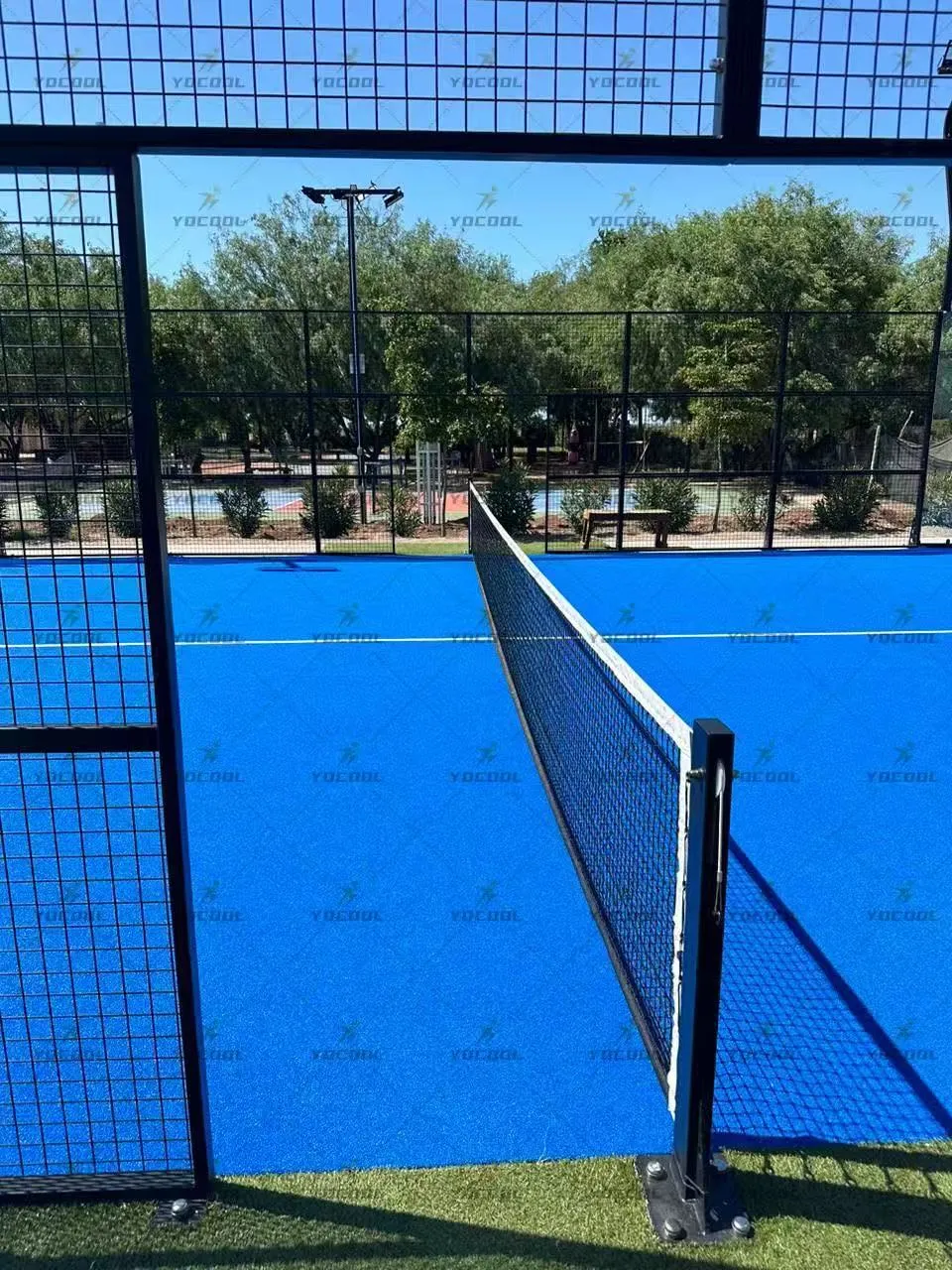

In recent years, padel and table tennis have rapidly grown in popularity, capturing the attention of athletes, recreational players, and sports facility developers alike. Whether you're a seasoned competitor or a newcomer discovering the thrill of racket sports, having the right equipment and playing conditions makes all the difference. The convergence of advanced materials, refined design, and world-class indoor facilities has redefined performance standards. From selecting a professional ping pong paddle to assessing the value of an indoor padel court, understanding the essentials can elevate your game to the next level.

One of the most defining factors in table tennis performance is the choice of gear, particularly a professional ping pong paddle that meets competition-level standards. While amateur paddles may suffice for casual games, serious players require paddles with precision-engineered blades and high-tension rubbers that provide the ideal balance of speed and spin. Choosing a paddle that features a five- or seven-ply wood core with carbon fiber reinforcement ensures superior control and responsiveness. Moreover, customization options for grip and rubber thickness allow athletes to tailor their paddle to suit specific playing styles, making a professional ping pong paddle a foundational element in competitive success.
The popularity of padel has surged globally, and the rise in indoor padel courts reflects a growing demand for all-weather, high-performance facilities. These courts are increasingly being integrated into residential communities, gyms, and sports complexes to support year-round play regardless of climate. Constructed using glass walls and artificial turf, indoor padel courts are designed to optimize gameplay while offering spectators clear visibility and engaging experiences. Acoustic insulation and climate control further enhance these indoor environments, providing players with consistent conditions that support long-term skill development.
When it comes to maximizing performance on the court, selecting high-quality paddle tennis paddles is essential. Unlike traditional tennis racquets, paddle tennis paddles are solid with perforations and a compact structure that promotes agility and control. The modern versions are made with advanced materials like EVA rubber cores and carbon fiber exteriors, which offer a balanced mix of power and maneuverability. Players who aim to compete at higher levels understand the importance of paddle weight, surface roughness, and handle ergonomics. The right paddle tennis paddles, when matched to the player’s strength and swing technique, can significantly improve shot accuracy and endurance during prolonged rallies.
Modern padel tennis indoor arenas have revolutionized how the sport is played and accessed. Not only do they shield players from unpredictable weather, but they also provide lighting systems tailored for visibility and performance. These facilities are often constructed using modular or prefabricated systems, allowing for quick assembly and scalability. The trend of padel tennis indoor venues is also promoting inclusivity in the sport, as they offer accessibility for players of all ages and skill levels in urban and suburban settings. Such environments nurture consistent practice schedules and host professional tournaments without seasonal limitations, fostering both recreational engagement and elite competition.
Building or renting a padel facility involves understanding the nuances behind padel tennis court price. The cost depends on multiple factors, including structural design, flooring material, lighting, and branding. High-end padel tennis court price estimates include shock-absorbing turf, reinforced glass walls, and energy-efficient LED lighting systems. For long-term operators, return on investment is driven by court durability, maintenance costs, and user volume. Whether you’re installing a private court or developing a multi-court complex, it's crucial to compare features such as anti-slip flooring, ball rebound quality, and structural warranties when evaluating cost versus value. A well-constructed court offers longevity, enhances user experience, and supports competitive event hosting.
A professional ping pong paddle typically features advanced materials such as carbon fiber layers, ITTF-approved rubber surfaces, and ergonomic handles. These elements contribute to precision control, higher spin potential, and consistent stroke delivery.
Indoor padel courts eliminate seasonal restrictions and offer stable environments with controlled lighting and acoustics. This makes them ideal for professional training, league matches, and recreational play throughout the year.
No, paddle tennis paddles are designed specifically for the sport. Their solid design, combined with specific hole patterns and surface textures, optimize the balance between power and control that is essential in paddle tennis gameplay.
Q: What should I consider when choosing a professional ping pong paddle?
A: Consider blade composition, rubber type, grip style, and paddle weight. Advanced paddles offer better spin and control, which are essential for competitive play.
Q: Are indoor padel courts suitable for beginners?
A: Absolutely. Indoor padel courts provide consistent playing surfaces and protected environments, making them ideal for beginners who are developing foundational skills.
Q: How do paddle tennis paddles differ from padel tennis paddles?
A: Though similar in appearance, paddle tennis paddles typically have different weight distributions and dimensions tailored for different court sizes and rules.
Q: What is the average price to build a standard padel tennis court?
A: The padel tennis court price can range from $15,000 to $50,000, depending on materials, location, and features like lighting and fencing.
Q: Is padel tennis indoor more expensive to maintain than outdoor courts?
A: While initial construction costs may be higher, padel tennis indoor courts offer protection from weather damage and often require less frequent surface repairs, resulting in lower long-term maintenance.
Starts with Strategic Padel Court Solutions
Sports Facilities with Innovative Padel Court Construction
Revolutionize Sports Facilities with Custom Padel Court Construction
Master Industrial Racquetball Performance with Professional Equipment
Industrial Expansion Begins with Strategic Padel Court Construction Investments
Construct Future-Ready Sports Facilities with Industrial-Grade Padel Courts